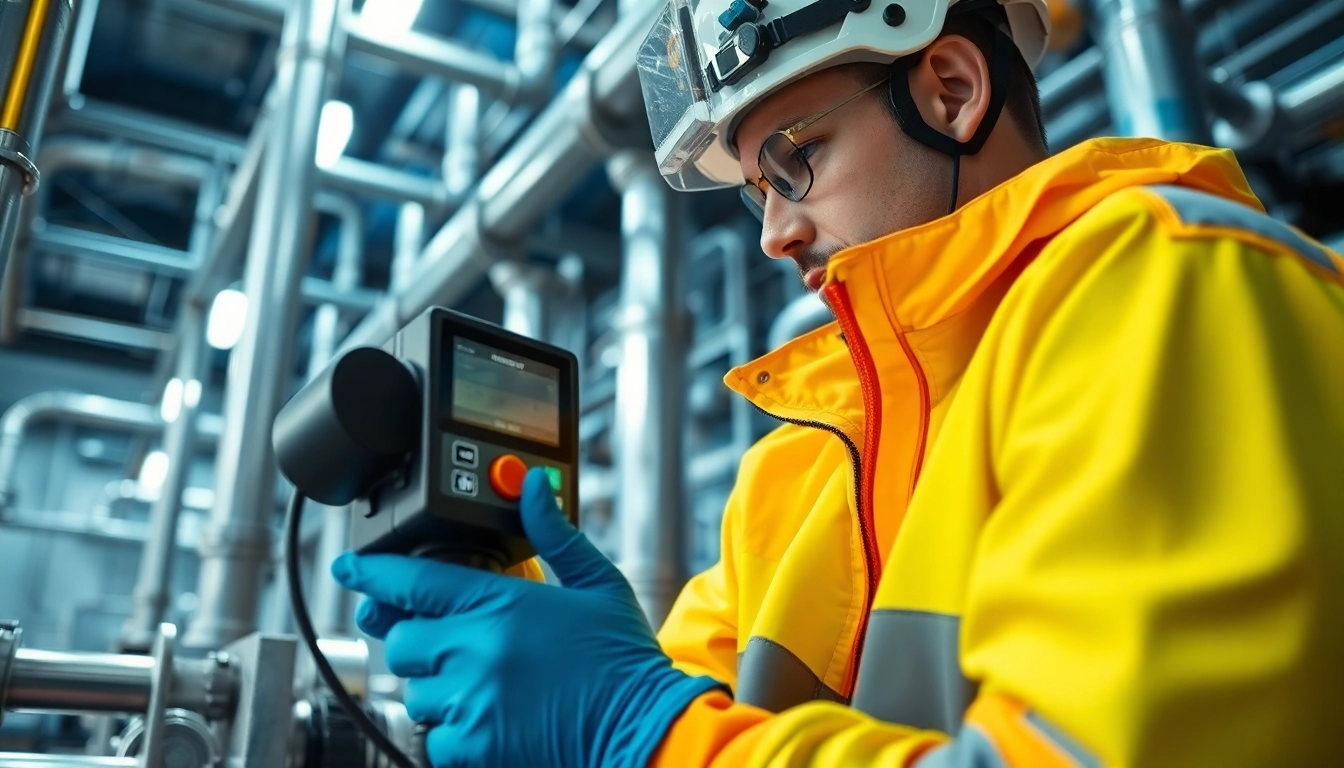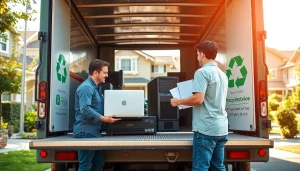The Ultimate Guide to Tracer Gas Leak Detection: Ensuring Safety and Accuracy

Understanding Tracer Gas Leak Detection
What is Tracer Gas Leak Detection?
Tracer gas leak detection is a highly efficient method used to identify the presence of leaks in various systems. This nondestructive testing approach involves the introduction of a tracer gas into the system under examination, allowing for the accurate identification of even the smallest leaks. The method is renowned for its sensitivity, making it a preferred choice in many applications ranging from industrial settings to residential utilities. When a leak occurs, the tracer gas escapes from the system, and specialized detection equipment picks it up, confirming a problem exists. For more in-depth information on this technique, refer to Tracer Gas Leak Detection.
Importance of Accurate Leak Detection
The significance of accurate leak detection cannot be overstated; undetected leaks can lead to disastrous consequences, including environmental damage, safety hazards, and increased operational costs. In industrial contexts, gas leaks can disrupt production, lead to costly downtime, and potentially cause harm to workers. In residential cases, unnoticed gas leaks can result in dangerous situations, such as explosions or adverse health effects due to gas inhalation. Hence, implementing tracer gas detection not only ensures operational integrity but also facilitates compliance with safety standards and regulations.
Types of Gases Used in Tracer Gas Leak Detection
There are several tracer gases commonly employed in leak detection activities. The most frequently used gases include helium, hydrogen, and nitrogen mixtures. Helium is particularly favored due to its small molecular size and non-toxicity, making it effective even for the tiniest leaks. Hydrogen is another popular choice, often used in combination with nitrogen, as it is also lightweight, inexpensive, and safe for the environment. The choice of tracer gas typically depends on the specific application and the required sensitivity of the detection process.
Common Applications for Tracer Gas Leak Detection
Residential Applications
In residential settings, tracer gas leak detection can play a critical role in safeguarding the home. It is primarily utilized to detect leaks in gas pipelines, heating systems, and plumbing infrastructures. Homeowners can benefit from this technology during routine maintenance checks or when they suspect leaks due to hissing sounds or unusual odors. Timely detection allows for necessary repairs to be made, averting potential disasters and promoting energy efficiency by reducing gas loss.
Industrial Applications
In industrial environments, leak detection is paramount to maintaining equipment efficiency and ensuring safety. Tracer gas leak detection is employed in various sectors, including manufacturing, oil and gas, and chemical processing. This approach allows for the examination of pressure vessels, piping systems, and storage facilities. Regular leak checks can prevent hazardous incidents, minimize downtime, and maintain product quality by ensuring that no external contaminants penetrate the systems. Moreover, it can also facilitate compliance with industry regulations and environmental protection mandates.
Eco-Friendly Solutions for Tracer Gas Leak Detection
As industries shift towards more sustainable practices, tracer gas leak detection has also evolved. Eco-friendly solutions utilizing non-toxic, natural gases are being developed to reduce environmental impact. Innovations in this sector focus on minimizing the ecological footprint while maintaining the effectiveness and sensitivity of traditional detection methods. These advancements not only contribute to corporate responsibility initiatives but also respond to growing consumer demand for green technology.
How Tracer Gas Leak Detection Works
The Science Behind Tracer Gas Leak Detection
The operation of tracer gas leak detection is grounded in fundamental scientific principles. The chosen tracer gas is introduced into the area of interest under controlled conditions. Due to its physical properties, including molecular weight and size, the tracer gas escapes through any leaks present in the system. Detection equipment, often utilizing advanced sensors, monitors the ambient atmosphere in the vicinity of the system to identify the presence of the tracer gas, determining the location of the leak based on the gas concentration levels observed.
Step-by-Step Process of Gas Leak Testing
- Preparation: The system is first prepared by isolating the section to be tested, ensuring operational integrity.
- Injection: The tracer gas is injected into the system at specific pressure levels, ensuring it permeates effectively.
- Monitoring: Specialized sensors or gas detectors are deployed around the system to monitor for any trace of the gas leaking into the atmosphere.
- Analysis: Data from the sensors is analyzed to determine gas concentration levels, assisting in pinpointing the exact location of the leak.
- Remediation: Once leaks are identified, maintenance and repair efforts are employed to rectify the issues.
Interpreting Test Results from Tracer Gas Leak Detection
Understanding the results from tracer gas leak detection tests is crucial for effective remediation. Test results typically include quantitative data reflecting gas concentration levels in the atmosphere. A higher concentration of tracer gas near the vicinity of a system indicates a potential leak, while lower or undetectable levels suggest the system is intact. Technicians must be trained to interpret these results accurately, factoring in environmental conditions and operating variables that may impact readings.
Best Practices for Effective Tracer Gas Leak Detection
Choosing the Right Equipment
Investing in the correct detection equipment is key to successful tracer gas leak detection. Factors to consider include sensitivity, detection range, and response time of the leak detectors. Operators should evaluate technologies such as mass spectrometers, thermal conductivity sensors, and portable detection devices to ensure they select the most appropriate tools for their specific applications. It is also essential to keep abreast of advancements in technology to continuously improve detection capabilities.
Training Technicians for Leak Detection
Equipping technicians with necessary skills and knowledge is vital for maximizing the effectiveness of tracer gas leak detection. Comprehensive training programs should encompass both theoretical and practical components, ensuring that personnel are familiar with detection methodologies, interpreting results accurately, and employing safety measures during leak testing processes. Continuous training and development initiatives will enhance the proficiency of technicians and improve detection outcomes.
Regular Maintenance and Calibration of Tools
To maintain the effectiveness of leak detection equipment, regular maintenance and calibration are mandatory. Equipment should undergo routine checks to ensure adherence to manufacturer specifications and industry standards. Calibration should be conducted at appropriate intervals, ensuring sensitivity levels are optimal for detecting the smallest leaks. This proactive approach will not only enhance detection accuracy but also extend the lifespan of the equipment, ultimately leading to cost savings over time.
Future Trends in Tracer Gas Leak Detection
Innovations in Detection Technology
The future of tracer gas leak detection is poised for significant advancements driven by technological innovation. Emerging technologies such as drones equipped with gas detection sensors, AI-driven analysis tools, and remote monitoring systems are set to revolutionize the industry. These advancements promise faster, more precise leak detection capabilities, allowing for extensive monitoring capabilities in previously hard-to-access areas while enhancing the safety of personnel involved in leak detection activities.
Government Regulations Impacting Tracer Gas Leak Detection
Government regulations and environmental policies are increasingly influencing practices within the arena of tracer gas leak detection. Stricter policies regarding emissions and environmental protection necessitate more rigorous leak detection standards from industries. Compliance can often steer organizations towards adopting advanced tracer gas detection systems that not only meet regulatory requirements but also foster corporate accountability in managing natural resources and minimizing waste.
Environmental Considerations for Future Practices
As awareness of environmental issues rises, future practices in tracer gas leak detection will likely pivot toward sustainability. This shift involves developing eco-friendly tracer gases, employing energy-efficient detection equipment, and integrating practices that minimize the overall carbon footprint associated with leak detection operations. Organizations adopting these practices will not only benefit from reduced operational costs but also align their activities with global sustainability goals.




